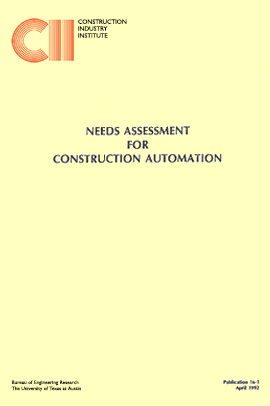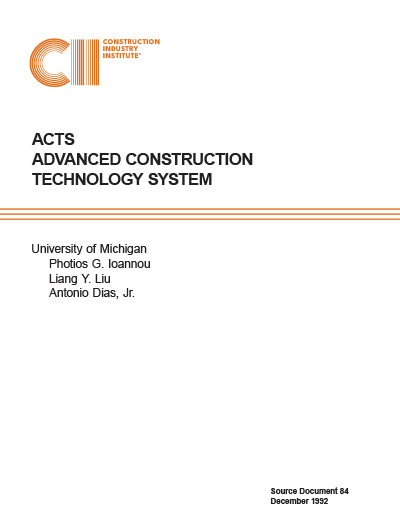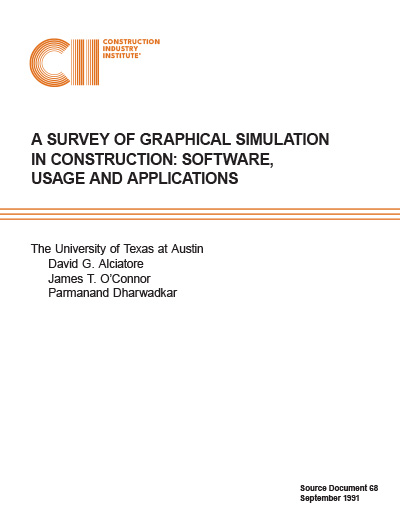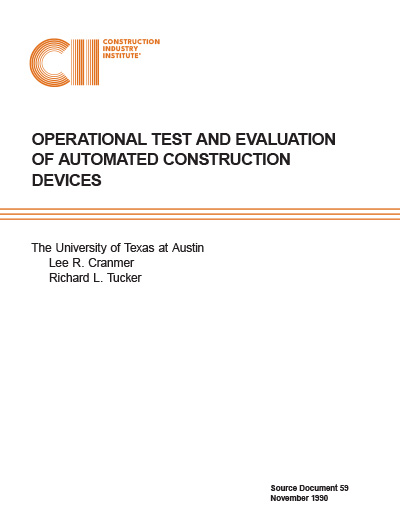
Needs Assessment for Construction Automation
The construction industry, as a form of manufacturing, is often considered archaic. Basic methods for physically putting work in place have not changed dramatically in the last 30 years. The availability of a large supply of trained construction workers has traditionally been assumed when planning projects. That availability, combined with an emphasis on short-term efficiency, low costs, and a lack of research and development (R&D), has precluded significant attention to automation. As in other industries, productivity and quality in construction have been dependent more upon humans than on machines.
A number of factors indicate that this situation may be changing. Most demographic studies predict a major shortage of skilled construction workers. Many are dissatisfied with construction worker ability to predict final project costs, schedules, and quality accurately. Increasing attention is given to construction safety; many suggestions for improving construction operations relate to reducing hazards in the construction environment. Recent technological advancements have increased the feasibility of replacing some construction workers with smart tools, robots, or other automated devices.
Attention to construction automation is growing. The R&D necessary to create practical construction devices is expensive, however, and resources are expected to be limited for many years. Thus, it is important to identify those construction tasks that have the highest potential for automation and focus immediate efforts on those tasks that have the highest probable payoff.
The purpose of this publication is two-fold. First, it describes a methodology for identifying automation benefits. The methodology can be applied to a variety of construction activities. Second, the methodology is applied to three important areas of industrial construction: piping, electrical, and steel erection. The methodology and pilot efforts have identified a total of 12 tasks that promise to benefit from automation.
This research has addressed neither the issue of automation feasibility nor how widely a solution to a particular need might apply across the universe of construction tasks. These issues are left for future R&D activities, as is the matter of opportunities in other construction market segments. Undoubtedly, many useful automated devices will be developed for tasks outside those identified here as ideas and opportunities develop. Nonetheless, this publication provides a methodology and format for addressing automation as interest and activity increase in this important area.
This simple four-quadrant matrix is used to plot tasks based on cost impact and concern rating. The matrix serves as a guide to help assess the relative need for automation among the tasks. (Note – this tool has been archived) (RS16-1, p. 9)



